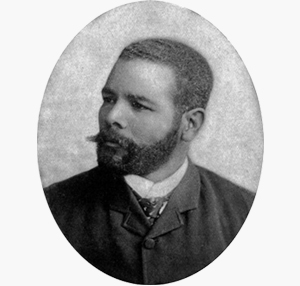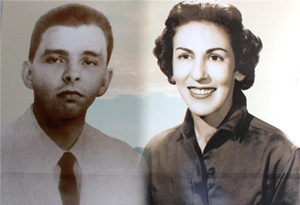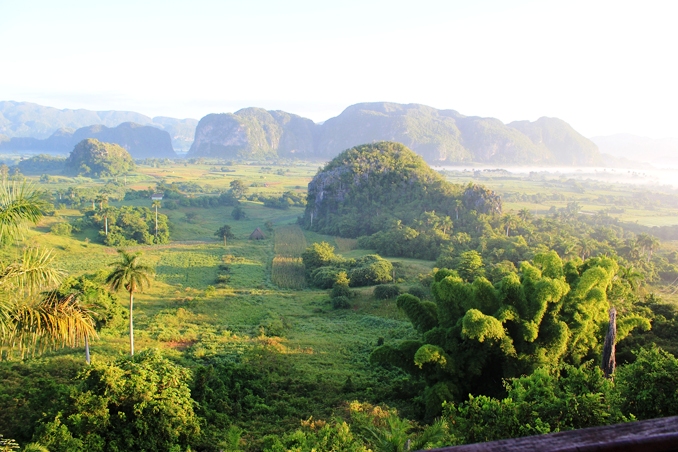Written by: Dr. Dushka H. Saiyid - Posted on: October 3, 2013 |  Comments | 中国 (Chinese)
Comments | 中国 (Chinese)
Google Translation: اُردو | 中文
We took a Viazul coach from Trinidad to Santiago, which is at the eastern end of the island. A ten-hour journey was extended when the coach had a flat tyre, and we didn’t reach our hotel till midnight. Santiago de Cuba, like Salvador in Brazil, has a strong Afro-Caribbean culture, and is closer to Haiti and the Dominican Republic than to Havana.
 |
| Antonio Maceo |
Somewhat removed from the main cities of Cuba, Santiago has a history of being at the center of wars and revolutions. The Spanish conquistador and the first Spanish governor of Cuba, Diego Velazquez de Cuellar, founded Santiago in 1514. It remained the capital of Cuba till 1607, when it was moved to Havana. Both the wars of independence were fought in and around Santiago, and the hero of the second war of independence, that great mulato general, Antonio Maceo, was also born here.
Castro was a student here, before moving to the University of Havana. His first abortive attempt at revolution was by attacking the Moncada barracks on July 26, 1953, which still retains the bullet marks on its walls, and houses a museum. Santiago celebrates July 26 with great fervour, and hosts one of the best carnavals in the Caribbean on that day. We were there for this extravaganza of floats, parades, dance and music, but felt safe as tourists. The general order maintained on this occasion of festivities, was impressive.
 |
| Celia Sanchez and Frank Pais, Museo de la Lucha Clandestina |
Continuing their tradition of rebellion, the people of Santiago rose in revolt against Batista on November 30, 1956. This was to distract attention from Castro’s landing with a small force on the shore in Granma. Frank Pais was the leader of the underground movement in Santiago that supplied Castro’s revolutionaries with arms and ammunition, as they struggled in the Sierra Maestra. Museo de la Lucha is devoted to exhibits of these revolutionaries who fought, often to death, to free their country from the oppressive rule of Batista. A large picture of Frank Pais and Celia Sanchez adorns the lobby of the museum, a tribute to the two revolutionaries from Santiago.
The centerpiece of the city is the Parque Cespedes, near the Museo de la Lucha. Situated in the Parque is the Casa de Diego Velazquez, the official residence of the first Spanish governor of Cuba, dating back to 1522. It was restored in the 1960s, and is a good reflection of the lifestyle of early conquistadors in Cuba. On the northern side of the Parque is Ayuntamiento; Castro announced the triumph of the revolution from its balcony on January 2, 1959. It is easy to imagine the throngs of people in a jubilant and excitable state waiting in the Parque Cespedes, to hear and see this guerrilla leader announce the victory of the revolution. On the eastern side is the Hotel Casa Granda, made famous by Graham Greene in his novel, Our Man in Havana. Built in Parisian style in 1914, with a deep verandah overlooking the Parque, it was packed with people lunching while being serenaded by a live band. Towering over the Parque is the impressive cathedral, built in early twentieth century and said to be the final resting place of Diego Velazquez de Cuellar.
After our short but sweet stay in Santiago, we headed back by taxi to Havana. It’s a long drive of over twelve hours, meant only for the strong of heart. Time was running out and we had to visit Viñales before heading home.
 |
| Mogotes typical of Vinales |
Parque Nacional Viñales, an 11km-by-5km valley, is only a couple of hours drive from Havana. It was declared a UNESCO World Heritage because of the small rocky outcrops called mogotes. These unusual geological formations were created 100 million years ago. It is also famous for its limestone caves, the largest and most famous of these being Caverna Santo Tomas.
The valley is ideal for trekking and horse riding, and though recommended for cycling, it is easier to get to the heart of the valley on a horse or on foot. We got an opportunity to visit a farm and see the inside of one of the thatched houses and how tobacco leaves are dried in it. The farmer demonstrated to us how cigars are hand-rolled, and gave us excellent espresso coffee made from the beans growing on his farm.
Two days in Viñales was not enough; we watched the sun rise over the achingly beautiful valley from the hotel balcony, and headed back to Havana to catch our flight out after an intense 15 days of traveling in Cuba. All of us agreed, that we needed more time for this fascinating country with its gentle and soulful people with a zest for life.
Click to view picture gallery